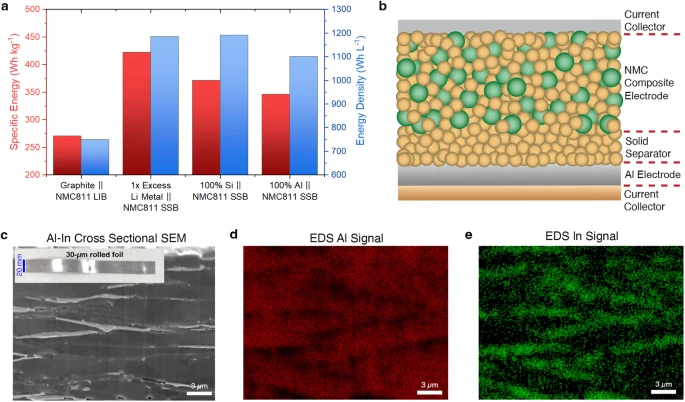Science Daily July 19, 2023
Metal negative electrodes that alloy with lithium have high theoretical charge storage capacity and are ideal candidates for developing high-energy rechargeable batteries. However, such electrode materials show limited reversibility in Li-ion batteries with standard non-aqueous liquid electrolyte solutions. A team of researchers in the US (Georgia Institute of Technology, industry) used non-pre-lithiated aluminum-foil-based negative electrodes with engineered microstructures in an all-solid-state Li-ion cell configuration. When a 30-μm-thick Al94.5In5.5 negative electrode is combined with a Li6PS5Cl solid-state electrolyte and a LiNi0.6Mn0.2Co0.2O2-based positive electrode, lab-scale cells delivered hundreds of stable cycles with practically relevant areal capacities at high current densities. They demonstrated that the multiphase Al-In microstructure enabled improved rate behavior and enhanced reversibility due to the distributed LiIn network within the aluminum matrix. According to the researchers their results demonstrated the possibility of improved all-solid-state batteries via metallurgical design of negative electrodes while simplifying manufacturing processes… read more. Open Access TECHNICAL ARTICLE

Energy metrics of various negative electrodes within SSBs and structure of negative electrodes. Credit: Nature Communications volume 14, Article number: 3975 (2023)